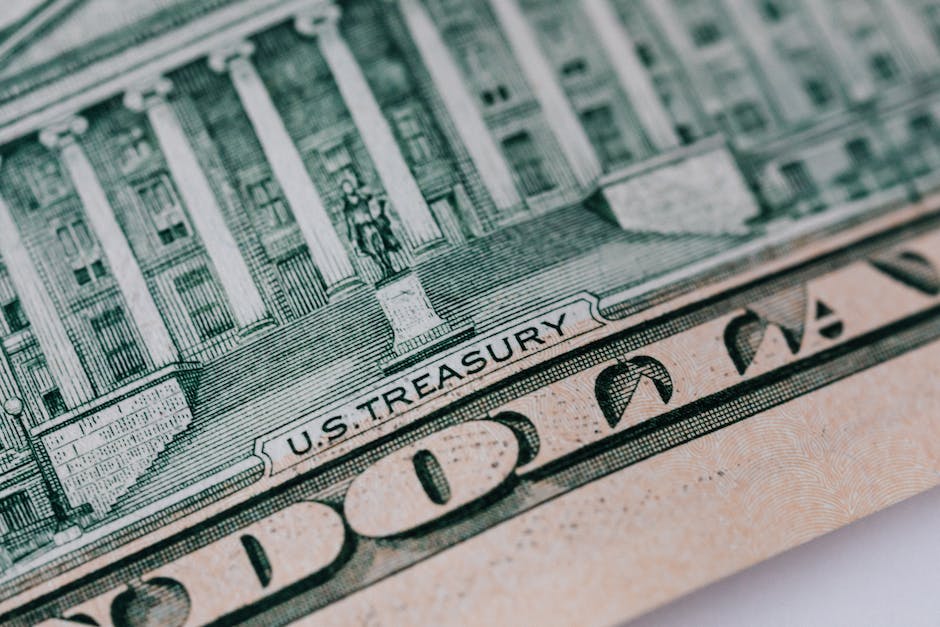Cannabis, also known as marijuana, has a rich and controversial history in America. It has long been recognized for its medicinal properties and has been used for various purposes throughout the centuries. However, in recent years, the perception and laws surrounding cannabis have undergone significant changes, sparking debates and discussions across the nation.
From ancient times to the early 20th century, cannabis was widely used for its therapeutic benefits. Ancient civilizations such as the Chinese, Egyptians, and Greeks utilized cannabis as a remedy for various ailments. It was considered a valuable plant with properties that could alleviate pain, reduce inflammation, and promote relaxation.
In the United States, cannabis was initially introduced by the colonists who grew it as a cash crop. Hemp, a strain of cannabis, was used for industrial purposes, such as making rope, textiles, and paper. It played a crucial role in the early years of the American economy.
However, the perception of cannabis began to change in the early 20th century with the rise of anti-drug campaigns and increasing concerns about its potential negative effects. The Cannabis Tax Act of 1937 marked a significant turning point, effectively criminalizing the possession and distribution of the plant. This legislation effectively restricted the use of cannabis for both medicinal and recreational purposes.
In the following decades, cannabis remained strictly prohibited, and its use was associated with criminal activity. The “war on drugs” initiated by the government in the 1970s further intensified the crackdown on cannabis, along with other illicit substances. This period saw increased penalties and harsher sentences for cannabis-related offenses, contributing to the stigma surrounding the plant.
However, the late 20th century witnessed a gradual shift in public opinion towards cannabis. Studies began to highlight the potential medical benefits of the plant, particularly in managing chronic pain, nausea, and other symptoms associated with various medical conditions. This newfound understanding prompted the introduction of state-level medical marijuana programs, starting with California in 1996.
Over the past few decades, a wave of cannabis legalization has swept across the United States. As of now, several states have legalized the recreational use of cannabis, while many others have established comprehensive medical marijuana programs. The changing legal landscape has allowed for a more nuanced conversation surrounding cannabis, its potential benefits, and the economic opportunities it presents.
This blog series aims to explore the fascinating and evolving history of cannabis in America. From its ancient origins to the modern legalization movement, we will delve into the social, cultural, and economic factors that have shaped the cannabis landscape in the country. Join us as we trace the path of this controversial plant and uncover the complexities surrounding its use, regulation, and potential impact on various industries.
Stay tuned for the next installment, where we dive into cannabis prohibition and its impact on society.
– Brief overview of cannabis and its historical significance in America

Cannabis, also known as marijuana, has a long and complex history in America, with its significance ranging from cultural to economic aspects. Native to Central Asia, cannabis has been utilized by different civilizations for various purposes, including medicinal, spiritual, and industrial. Its arrival in America can be traced back to the early 17th century, when European colonizers began to cultivate the plant for its industrial potential.
During the colonial period, cannabis was widely grown for its fiber, which was used to produce textiles, ropes, and sails. Hemp, the non-intoxicating variety of cannabis, became an essential crop for early settlers, serving as a valuable commodity and contributing to the development of local economies. In fact, some of the Founding Fathers, such as George Washington and Thomas Jefferson, advocated for the cultivation of hemp and recognized its immense economic importance.
As America moved into the 19th and early 20th centuries, the perception and use of cannabis began to shift. It started to gain popularity as a recreational substance, with various social groups endorsing its consumption. Artists, intellectuals, and musicians were among those who embraced cannabis, perceiving it as a means to find inspiration and creativity.
However, as the 20th century progressed, a paradigm shift occurred, leading to strict regulations on cannabis. Prior to federal prohibition, individual states started introducing restrictions, driven by biased propaganda campaigns associating cannabis with criminality and racial stereotypes. In 1937, the Marihuana Tax Act effectively criminalized the possession and distribution of cannabis on a nationwide scale.
In the decades that followed, the perception of cannabis began to change once again. Social and cultural movements emerged, challenging the deeply ingrained negative stigma surrounding the plant. The rise of the counterculture movement in the 1960s and 1970s helped to shed light on the potential benefits of cannabis, leading to the first steps towards its decriminalization.
Fast forward to the present day, and cannabis laws in America continue to evolve. Currently, medical cannabis is legal in many states, with a growing number embracing its therapeutic potential. Moreover, several states have legalized the recreational use of cannabis, recognizing the economic benefits that come with regulation and taxation.
The history of cannabis in America is a testament to the dynamic and ever-changing nature of societal perceptions and attitudes. From its early use in industrial applications to its controversial status as a recreational substance, cannabis has played a significant role in shaping various aspects of American culture and history. As the conversation around cannabis continues to progress, it will be interesting to witness the future developments and the potential impacts on the economy, healthcare, and social fabric of the nation.
Native American usage (1600s – 1700s)

Native American Usage (1600s – 1700s):
In the 17th century, before the arrival of European settlers, cannabis, also known as marijuana, had already established a significant presence in the Americas, with Native American tribes utilizing the plant for various purposes. These tribes, spread across different regions of North America, integrated cannabis into their diverse cultures and incorporated it into their everyday lives.
Native Americans incorporated cannabis into their spiritual and medicinal practices, recognizing its potential therapeutic benefits. Several tribes, including the Algonquian, Iroquois, and Mohawk, used cannabis as part of their traditional healing techniques. They created preparations such as teas, poultices, and balms by infusing cannabis leaves and flowers with oils or fats. These remedies were employed to alleviate pain, reduce inflammation, and treat a range of ailments, including headaches, arthritis, and gastrointestinal issues.
Additionally, cannabis played a significant role in Native American spiritual ceremonies and rituals. Many tribes believed that the plant possessed sacred properties and used it during religious practices, often referring to it as a “gift from the Great Spirit.” Cannabis was considered a conduit to achieving spiritual enlightenment, facilitating communication with the divine, and enhancing ceremonial experiences.
The Native American use of cannabis extended beyond just medicinal and spiritual functions. Some tribes also utilized the plant’s fibers and stalks to craft textiles, ropes, and baskets. The sturdy and versatile nature of cannabis fibers made it a valuable resource for these communities, helping them to create everyday items necessary for their subsistence and trade.
However, with the arrival of European colonizers in the Americas, attitudes towards cannabis began to shift. As Europeans brought their own cultural, economic, and religious practices, they viewed cannabis with suspicion and eventually sought to suppress its use. The ensuing centuries witnessed the colonization and forced assimilation of Native American tribes, leading to the loss of traditional knowledge surrounding cannabis and severing their connections to this plant.
It is important to acknowledge and honor the historical contributions of Native Americans when discussing the cannabis plant in America. Their utilization of cannabis for medicinal, spiritual, and practical purposes demonstrates a deep understanding of the plant’s potential and its integration into their cultural practices. As we explore the complex and evolving landscape of cannabis in America, it is imperative to recognize and learn from the indigenous traditions that preceded European influence.
– Discuss the early cultivation and utilization of cannabis among indigenous tribes

Cannabis has a rich and vibrant history in America, dating back thousands of years. Before European settlers arrived on American soil, indigenous tribes had already been cultivating and utilizing cannabis plants for various purposes. These tribes recognized the numerous benefits and properties of the plant, incorporating it into their daily lives and cultural practices.
Early cultivation of cannabis by indigenous tribes can be traced back to different regions across North and South America. Tribes such as the Cherokee, Mohawk, and Sioux were known to grow and harvest cannabis plants in their respective territories. They understood the importance of the plant’s fibers, which were used in making textiles, ropes, and even constructing dwellings.
However, it is important to note that the cultivation of cannabis by these tribes extended beyond just practical uses. Cannabis held significant spiritual and ceremonial value as well. Many indigenous tribes used cannabis in their religious rituals, considering it a sacred and powerful plant. It was commonly utilized for healing and connecting with the spiritual realm during shamanic practices.
Besides its practical and spiritual uses, cannabis was also integrated into indigenous tribes’ social and recreational activities. Cannabis consumption, often in the form of smoking, was a common practice during social gatherings and celebrations. It played a role in fostering social cohesion and strengthening societal bonds within these communities.
Unfortunately, with the arrival of European settlers, the perception and treatment of cannabis took a drastic turn. The cultural and spiritual significance of cannabis among indigenous tribes were disregarded, and negative stereotypes began to emerge. As time passed, cannabis became stigmatized, leading to its eventual prohibition and criminalization in the early 20th century.
However, in recent years, there has been a renewed interest in recognizing and honoring the historical relationship between indigenous tribes and cannabis. Efforts are being made to respect the cultural heritage of these tribes, and acknowledge their traditional knowledge and connections to the plant.
Understanding the early cultivation and utilization of cannabis among indigenous tribes is crucial to appreciating the plant’s historical significance in America. It reminds us of the diverse cultural practices that preceded the modern understanding and perceptions surrounding cannabis today. Recognizing and respecting this history is an essential step towards fostering a more holistic and inclusive approach to cannabis in contemporary society.
– Highlight its role in rituals, medicine, and textiles

Cannabis has a long and fascinating history in America, spanning centuries of different uses and cultural significance. From its origins as a plant used in ancient rituals to its role in modern medicine and textiles, cannabis has played a multifaceted role in American society.
Historically, cannabis has been used in religious and spiritual ceremonies by various indigenous tribes across the continent. Many Native American tribes incorporated cannabis into their rituals, believing it to have mystical properties that could enhance their connection to the spiritual realm. These rituals often involved burning cannabis as an offering or using it as a tool for meditation and introspection.
In addition to its spiritual uses, cannabis has also been valued for its medicinal properties throughout history. In the early days of America, cannabis was commonly utilized as a treatment for various ailments and pains. Physicians would prescribe cannabis tinctures and extracts to alleviate symptoms such as chronic pain, nausea, and even epilepsy. It was not until the early 20th century that the recreational use of cannabis came under scrutiny, leading to the eventual criminalization of the plant.
Aside from its spiritual and medical applications, cannabis has also had a significant impact on the textile industry in America. Before the widespread use of cotton, hemp fiber was a popular choice for textiles due to its durability and versatility. Early American settlers grew hemp crops for making ropes, sails, clothing, and even paper. In fact, some of the most important historical documents, including the Declaration of Independence, were written on hemp paper.
However, the perception of cannabis drastically shifted during the early 20th century, largely driven by moral and political forces. The infamous “Reefer Madness” campaign and the subsequent criminalization of cannabis led to its prohibition and stigmatization throughout America. This period saw the suppression of cannabis-related industries and the demonization of its use in any form.
Despite its prohibition, recent years have witnessed a resurgence of interest in cannabis for both medicinal and recreational purposes. With the growing recognition of its therapeutic potential, several states in America have legalized cannabis for medical use, with some even legalizing it for recreational purposes. This shift in attitude has sparked a wave of scientific research, leading to the development of cannabis-based medicines and alternative therapies.
In conclusion, the history of cannabis in America is complex and varied. From its integral role in ancient rituals to its medicinal applications and contributions to the textile industry, cannabis has left a lasting imprint on American society. As attitudes continue to evolve and more research is conducted, it is essential to understand and appreciate the cultural significance and potential benefits of this versatile plant.
Hemp production in the colonial era (1700s – early 1800s)

During the colonial era in America, hemp production played a crucial role in the economic development of the colonies. Hemp, a variety of the Cannabis plant, was widely grown and utilized for a wide range of purposes.
In the early 1700s, the practice of cultivating hemp was encouraged by the British government, as it served as a valuable source of fiber for making ropes, sails, and clothing. Due to its versatility and durability, hemp quickly became a significant cash crop for the colonies, particularly in regions such as Virginia, Pennsylvania, and New England.
Hemp cultivation required large tracts of land, making it an ideal crop for the vast expanses of undeveloped land in the American colonies. Not only did it provide an economic opportunity for settlers, but it also played a crucial role in providing essential raw materials for the burgeoning maritime industry. Ships that sailed the oceans were highly dependent on hemp for their ropes, rigging, and sails, making the success of hemp cultivation vital for trade and exploration.
To encourage hemp production, colonial governments promoted its growth through laws and regulations. They often mandated that farmers dedicate a certain portion of their land for cultivating hemp and imposed penalties on those who failed to comply with these requirements. In some cases, the authorities even offered financial incentives or rewards to farmers who excelled in hemp cultivation. This governmental support contributed to the widespread adoption of hemp farming in the colonies.
Hemp production in this era involved labor-intensive processes. Entire families, including women and children, would participate in the cultivation and processing of hemp. The process began with sowing the seeds in well-prepared fields, followed by careful cultivation to ensure healthy growth. Once the plants matured, they were harvested, soaked in water, retted to separate the fibrous outer layer, and then dried in the sun.
Although hemp production was primarily driven by its practical applications, its role extended beyond textiles and maritime needs. Hemp seeds were also utilized for food and oil extraction. They were often ground into flour or used as a nutritious ingredient in various dishes. Additionally, the plant’s oil was used for lighting lamps and as an ingredient in making soaps and lubricants.
As the colonies started to grow and evolve, the demand for hemp continued to rise. However, advancements in technology and the emergence of alternative crops gradually caused a decline in hemp production. The invention of the cotton gin and the increased availability of imported natural fibers made from cotton and jute posed challenges to hemp’s market dominance.
Nevertheless, during the colonial era, hemp played a vital role in the economic prosperity of the American colonies. The cultivation of hemp not only provided essential raw materials for multiple industries but also created job opportunities for many settlers. As we explore the history of cannabis in America, it is crucial to recognize the significant impact hemp had on the early development of the nation.
– Explore the use of hemp for maritime purposes, papermaking, and textiles during this period

During the early years of America’s history, the use of hemp was prevalent for various purposes including maritime, papermaking, and textiles. Hemp, derived from the Cannabis sativa plant, held incredible potential as a versatile raw material that could be cultivated and utilized for a range of applications.
Maritime exploration and trade were essential to the growth and development of America. Hemp played a crucial role in this domain as it was used extensively for the production of ropes, sails, and rigging. The durable and strong fibers of hemp made it an ideal material for maritime purposes, ensuring the robustness and reliability of ships during long voyages. Ships powered by wind could navigate the vast oceans efficiently, powered by hemp-based products that withstood the unpredictable forces of nature.
Another significant utilization of hemp during this period was in the field of papermaking. Before the widespread use of wood pulp, paper was predominantly made from hemp fibers. The strength and longevity of hemp-based paper made it a preferred choice for official documents, newspapers, and books. The versatility of hemp allowed for the production of high-quality papers, enabling a thriving publishing industry during America’s early years.
Textiles were yet another sector that greatly benefited from the utilization of hemp. The strong and durable fibers derived from the hemp plant were spun into thread and then woven into fabrics. These fabrics became the foundation of many essential items, including clothing, bedding, and homeware. Hemp textiles were valued for their resilience, breathability, and versatility. They provided individuals with comfortable and long-lasting clothing that could withstand the rigors of daily life.
The use of hemp for maritime purposes, papermaking, and textiles during this period proved its immense value and versatility as a raw material. The role of hemp was not only limited to these sectors but expanded into many others as well. As we delve further into the history of cannabis in America, we will explore additional ways in which this remarkable plant has shaped the nation and its industries.
– Mention its economic importance to early American colonies

Cannabis, also known as hemp, has a rich history in America, with its economic importance extending back to the earliest colonies. During the 17th and 18th centuries, cannabis played a pivotal role in the economy, shaping the growth and development of the early American colonies.
One of the primary reasons for the economic significance of cannabis was its versatility. The plant provided numerous resources that were vital to the colonies’ survival and progress. Hemp, a strain of cannabis, was cultivated for its strong and durable fibers, which were used in the production of textiles, ropes, and paper. The colonies heavily relied on these products for their daily needs and trade with other regions.
As demand for these goods grew, hemp quickly became a profitable crop for the colonists. Its cultivation spread across the American colonies, with Massachusetts, Virginia, and Pennsylvania emerging as major hemp-producing regions. The production and export of hemp not only boosted the colonies’ economy but also contributed to their self-sustainability.
Furthermore, cannabis had significant economic importance for early American medicine. The plant was utilized in various medicinal preparations, with cannabis extracts being a common ingredient in many remedies. Colonists recognized its therapeutic properties and relied on cannabis as a valued medical resource.
Cannabis also played a role in the early American agricultural landscape. The plant’s ability to thrive in different growing conditions made it an attractive choice for farmers. Its cultivation required minimal resources, making it a cost-effective crop. Additionally, cannabis served as a rotational crop, helping to restore soil fertility and increasing the yields of other agricultural products.
However, despite its economic significance, the perception of cannabis began to shift during the early 20th century. Various factors, including the rise of cotton and synthetic fibers, the demonization of psychoactive strains of cannabis, and political pressures, contributed to the decline of hemp production. Gradually, hemp cultivation became heavily regulated, and its economic importance diminished.
In recent years, there has been a resurgence of interest in cannabis, both for its economic potential and its medicinal properties. As legalization efforts gain traction across the United States, the economic impact of cannabis is once again coming to the forefront. From industrial applications to medical advancements, the revival of the cannabis industry promises new opportunities for economic growth and innovation.
In conclusion, the economic importance of cannabis in early American colonies cannot be understated. From providing essential resources to supporting agricultural development and medicinal practices, cannabis played a pivotal role in shaping the economy of that time. As we move forward, understanding the historical significance of cannabis will help us navigate its future potential and the opportunities it offers for economic advancement.
Cannabis as medicine (1800s)

During the 1800s, cannabis held a significant place in the field of medicine in America. Physicians of that era prescribed cannabis-based medicines to treat a wide range of ailments and conditions. Cannabis was commonly used due to its numerous medicinal properties and therapeutic effects.
One of the key reasons why cannabis was utilized as medicine during this period was its ability to alleviate pain. It was commonly prescribed as a painkiller for conditions such as migraines, arthritis, and menstrual cramps. The natural analgesic properties of cannabis made it an effective option for managing chronic or acute pain.
Furthermore, cannabis was also recognized for its potential to reduce inflammation. Physicians often recommended cannabis-based medicines to patients suffering from conditions like rheumatism or bronchitis. The anti-inflammatory properties of cannabis made it a viable treatment option for individuals seeking relief from these ailments.
Another noteworthy use of cannabis as medicine in the 1800s was its application in mental health treatments. Doctors prescribed cannabis to patients with anxiety, insomnia, and even certain psychiatric disorders. The plant’s chemical compounds were believed to have a calming effect on the nervous system, making it a viable treatment for various mental health conditions.
In addition to these applications, cannabis was also utilized for its anti-epileptic properties. Physicians administered cannabis-based remedies to individuals suffering from seizures and other neurological disorders. The plant’s compounds were thought to help regulate electrical activity in the brain, reducing the frequency and intensity of seizures.
However, it is essential to note that the understanding and regulation of cannabis as medicine in the 1800s were vastly different from modern times. Medicines containing cannabis were often mixed with other substances, making it challenging to accurately measure dosage and control potential side effects.
As we delve into the history of cannabis in America, it becomes apparent that the use of the plant as medicine dates back centuries. During the 1800s, cannabis was widely recognized and utilized for its pain-relieving, anti-inflammatory, mental health, and anti-epileptic properties. The shift in public perception and regulatory frameworks surrounding cannabis has led to a reevaluation of its medicinal benefits in recent years, leading to a resurgence of research and exploration in this field.

